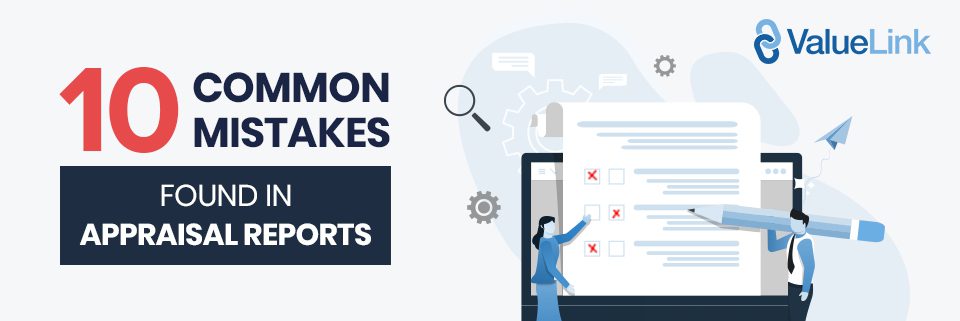The success of an appraiser lies in the reputation as a competent professional. As appraisers, you need to be extra vigilant and make sure you avoid certain appraisal violations that are quite common. Here is a compilation of the 10 most common mistakes found in appraisal reports by reviewers, regulators, and appraisal boards.
Incorrect Identification of Use, User and Client of the report:
Specific mention of the name or type in an appraisal report can help correctly identify the intended use, the intended user and the client of the appraisal report.
In many cases the addressee of the report is not the client and the intended user is not the one who receives the report. There may be a middle man working on behalf of the person requiring the appraisal report. This needs to be identified if true.
Lastly the real estate appraiser should assume that the customer does not have complete knowledge of how an appraisal is conducted; it’s the responsibility of the appraiser to make sure that all information found in a report must be written down clearly and accurately to the satisfaction of the client.
Scope of work:
In addition to the above, the USPAP has also listed down several key-points which are often missed by appraisers who are generating reports:
- Objective, or type of value in an appraisal
- Effective date
- Property characteristics that are relevant common-mistakes-found-in-appraisal-reports to the assignment (e.g. interest valued, physical and legal characteristics)
- Assignment conditions (e.g. extraordinary assumptions, jurisdictional exceptions).
Since these are the foundations of any real estate appraisal report, avoiding any one of the above can deem the report as incomplete.
Unnecessary Assumptions:
Appraisers often make assumptions regarding certain accessories of a property for e.g. a leaking water tank is a common problem which is highlighted when appraising old houses so appraisers mention this issue in all appraisals regarding old houses, without proper investigation.
Practices like these not only damage the validity of an appraisal but also reflect the ability of an Appraiser and hence must be avoided.
Perspective Value:
In the appraisal report for a property, the appraiser should include the prospective value of the property meaning the value of the property at the date on which the appraisal was completed so that their client has the latest information regarding the value of the appraisal.
Incomplete Analysis of subject property history:
Quite often, appraisers tend to ignore to include the sale trend of the property up to three years prior to the current date of the appraisal. The mentioned information comes in handy when an opinion of market value of the subject property is required.
Excess Land and Surplus Land:
These two items are frequently mistaken as the same by many appraisers. The basic difference between the two is excess land can be sold separately and its value must be reported separately while surplus land is part of the property being appraised in the report and its value must always be included in the appraised value of the property.
Reporting Requirements-Residential Appraisals:
All residential appraisals must be as per the guidelines contained in the Unified Residential Appraisal Reports. Not all appraisal reports require these guidelines but when working with lenders URAR guidelines must be strictly followed.
Market Area/Time Adjustment Inconsistency:
In a residential appraisal report form, within the Market Area Description section, if you check the box that indicates property values are declining, then a negative time adjustment is in order for your comparable sales. Residential appraisers are hesitant to indicate that property values are declining as lenders or mortgage brokers are `letting appraisers know that if they checked the “declining” box, the loan would not get approved.
The appraiser is held responsible for what they write in their report and by law they cannot be persuaded by anyone telling them what to write. Therefore, as an appraiser if you check the box that indicates property values are declining, then truly consider using a negative time adjustment for the competitive sales. But, if property values are increasing and if that box is checked, the appraiser should consider using a positive time adjustment for the comparable sales.
Putting Sales Along with Listings:
Appraisers often wrongly place listed properties on the sales page and by doing so mislead customers in their appraisal reports. The correct procedure should be to place the listed property on a separate page or in a different tab titled “listings” so to avoid confusion.
Failing to showcase report on time:
This problem highlights the inability of an appraiser to produce the report on time and hence causing delays. Generating Reports on time is an important requirement to becoming a good appraiser.
It is human to make mistakes but appraisers should strive to learn from them, and focus on not repeating the common mistakes listed above. As the UAD/UCDP requirements take effect, these mistakes may result in reports being rejected by the UCDP and may end up costing appraisers their hard earned business.
ValueLink CrossCheck helps you avoid these issues, pre-screening identifies the errors so that you can overcome the short comings before submitting the report to the UCDP.
A final tip for appraisers any information you write in your report must be supported by facts and should not be based on hypothetical assumptions, not only will you produce accurate and reliable reports but also free yourself from giving explanations regarding some irrelevant information which you might have reported.





